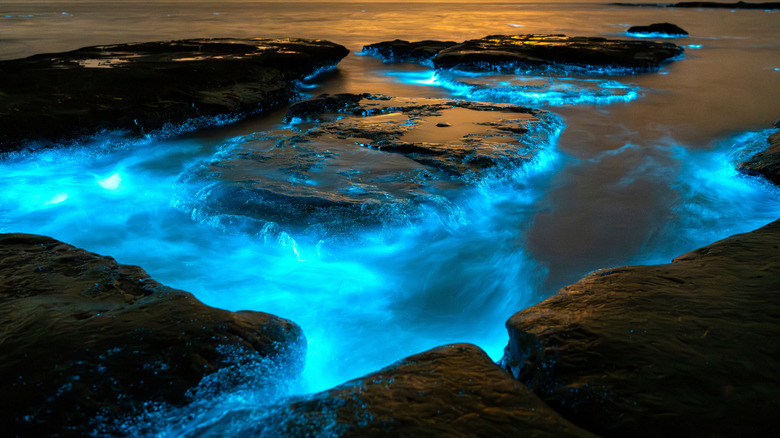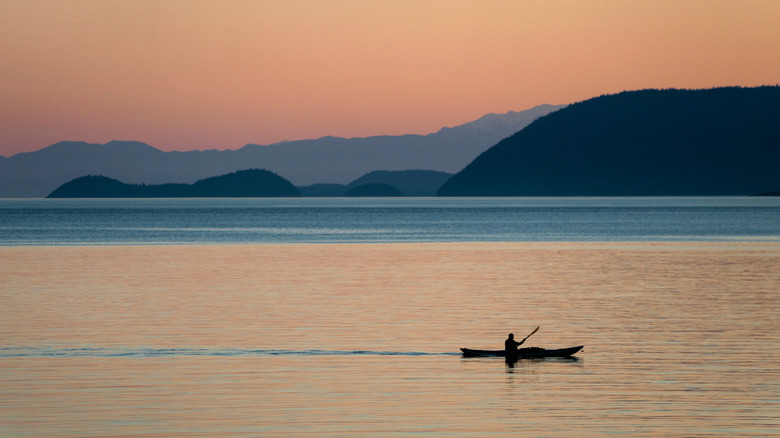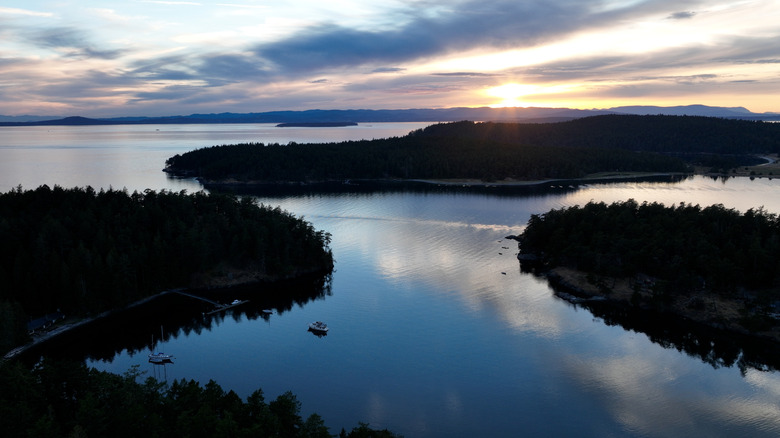Washington's Iconic San Juan Island Glows With Bioluminescent Waters That Will Mesmerize Kayakers
There's really no other place in the country like the San Juan Islands of Washington, which boast wildly pristine coastal views that rival Norway and rare natural phenomena. Surrounded by the Olympic Mountains to the south and the Cascades to the east, the islands are in a "rain shadow," buffered from the rainfall that the Pacific Northwest is otherwise known for. Its waters are even more astonishing: they host thick kelp forests and they're a mecca for whale-watching, with sightings often possible close to shore. But perhaps the most magnificent phenomenon in the waters here comes out at night, when a spray of blue-green light emitted by bioluminescent fauna seems to make the water glow.
The bioluminescent effect is most prominent around San Juan Island itself, the second-largest island of the archipelago. That's because the water here is dense with nutrients churned up by strong upwellings. The nutrient-rich water, in turn, attracts a diverse array of microorganisms, including this area's local bioluminescent critter: a single-celled protist called noctiluca that emits light when the water around it is disturbed. Sea kayaking is one of the best ways to get up close to this radiant marvel, though you could also witness it from the beach or even immerse yourself in the glow with a nighttime swim. Afterward, you could head to Friday Harbor, the walkable coastal town nestled on San Juan Island, and unwind over a drink at Cease & Desist, a well-rated beer hall overlooking the harbor.
Where and when to see bioluminescence around San Juan Island by kayak
Numerous bioluminescent kayaking tours are offered around San Juan Island, particularly around Friday Harbor and Roche Harbor. In Friday Harbor, Discovery Sea Kayaks is one of the best-rated services (with 4.9 stars on TripAdvisor) offering bioluminescent kayaking tours. San Juan Outfitters, also with 4.9 stars on TripAdvisor, is a great option that departs from Roche Harbor. To get to San Juan Island, you'll first need to take a ferry from the Anacortes Ferry Terminal, located about a one-hour drive from the Bellingham International Airport. The kayak tours typically launch right at sunset, and, if you're taking your own gear to explore the waters independently, this is a good time to plan for setting off, too. You'll get the most vibrant bioluminescent vistas after hot, sunny summer days, especially during the new moon phase (for minimal moonlight interference).
The best areas to see the bioluminescence around San Juan Island are at Garrison and Westcott Bays, both by the northwest shore. Some tours also highlight Griffin Bay, on the southeast shore closer to Friday Harbor, as a prime spot to see the glow. As you stir the water with your paddles, it will activate the bioluminescent organisms, pulling a glittering arc of blue light through the wavelets. In the nebulous currents of glowing sea, you might also spot some species of jellyfish that are common to bioluminescent waters, too.
Other ways to see San Juan Island's bioluminescence
If you're hesitant to get in a sea kayak (or have kids that can't join), it's possible to see the bioluminescent waters from the beach in some areas. At Garrison Bay, you can reach the shore from English Camp. There's a dinghy dock that gives you up-close access to water rife with bioluminescent noctiluca. There are also a handful of beaches that are easy to reach from Friday Harbor, including Jackson Beach, one that's frequently noted for having good views of the bioluminescence and that's walkable from the town's center in about 30 minutes.
The most intimate experience you can get with the bioluminescent water is swimming directly in it. As you wade through, the glowing noctiluca will light up all around you. While it is possible to swim around San Juan Island, the waters are hardly warm, sandy shores for a casual splash — for that, you could head to Luther Burbank Park, one of Washington's most beautiful beaches. For swimming in the San Juan Islands, you'll want to bring proper gear. A wetsuit is recommended, and in some areas prone to driftwood and rocky patches (like Jackson Beach), it's best to wear aqua shoes, too.


